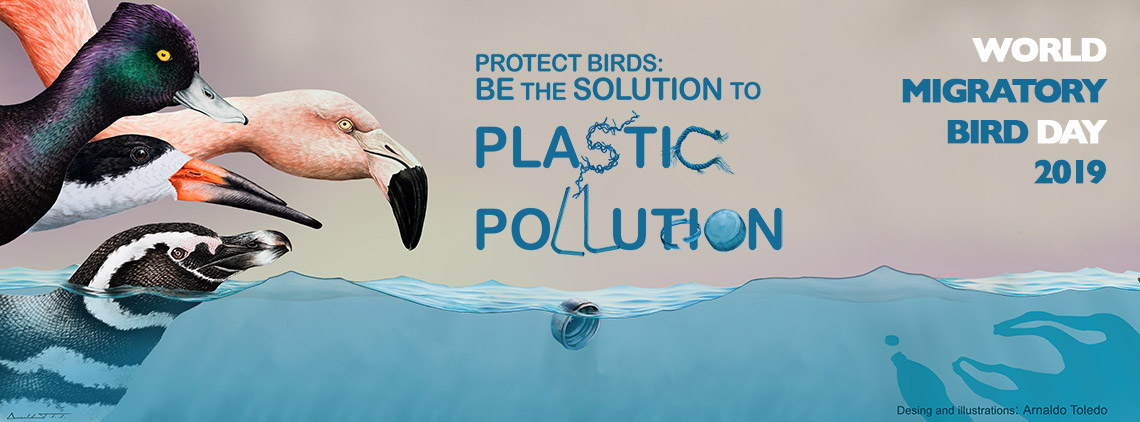
Discarded fishery gear (lines, rope, damaged traps), six-pack ring holders, and party balloons also have devastating effects on marine birds. It’s not simply the concrete residues of plastic products that trigger issues. As plastic breaks down in the ocean, it releases harmful chemicals that may attract seabirds. Worse, degrading plastics release destructive chemicals such as such as polychlorinated biphenyls (PCBs) and dioxins from the ocean water.

As they deteriorate into smaller sized bits they typically become virtually undetectable, however are still hazardous to the birds, fish, and sea turtles that unknowingly consume them. Laysan Albatrosses nesting amidst plastic debris washed up on Midway Atoll. Picture by Steven Siegel, Marine-Photobank Why do some birds eat plastic? Numerous seabirds mistake drifting plastic debris for prey.
Albatross likewise eat flying fish eggs, which are laid on floating debris; the hungry birds in some cases gobble up the plastic together with the fish eggs. Although surface-feeding birds such as albatross, shearwaters, and petrels are more likely to consume plastic than diving birds such as murres or gannets, current research studies suggest the number of bird types that mistakenly consume plastic is growing.
Some birds also utilize plastic products to line their nests. Scientists studying a colony of Northern Gannets approximated that the birds utilized 18 loads of plastic for nesting product, especially artificial rope. On a recent survey of remote Molokai Island, we saw Black Noddy nesting in caverns built of marine particles– little bits of fishing line, nests and rope.
Where do the plastics come from? The garbage spots of the world’s oceans– huge areas of built up drifting debris– are a tradition of years of inefficient usage and reckless disposal of trash. Although some countries have great waste-management systems, others see the ocean as the “away” place, and continue to dispose of plastics and other garbage there.
Volunteer for beach and stream clean-ups. During the International Coastal Clean-up Day (September 15th) and other occasions can galvanize regional communities to remove litter in waterways and beaches, and eventually secure marine birds, mammals, and sea turtles. Learn more here. Decrease intake of single-use, disposable plastic items. Whenever possible, reuse and recycle.
New resources on option and less ecologically damaging products are readily available such as compostable materials. Learn more here. Identify your “plastic footprint.” Just how much plastic waste do you purchase and dispose of in a week, a year, a life time? Then take actions to change your customer options to minimize the quantity of plastic in your life.
Many people do not recognize how much plastic winds up in the ocean. Speak to your pals, family, and coworkers about the effect of plastic on seabirds, turtles, and marine mammals. Talk with trainees and instructors about albatross with totally free lesson plans. Host a zero-waste event. Have a look at these resources for plastic-free public occasions and schools.
:max_bytes(150000):strip_icc()/gull-with-litter-5a43ba1147c26600368d06e9.jpg)
In some communities, changes at the regional level in local waste-management practices have led to restrictions on plastic bags and/or Styrofoam, which often end up in the ocean. One example: Assembly Costs 319 (Stone-California) would require all single-use plastic drink containers, such as bottled waters and sodas, to have a connected cap by 2020.
Has Actually there been any progress in tidying up plastic pollution and keeping more plastic waste out of the oceans? Yes, certainly. The silver lining to this serious problem is that individuals are becoming much more knowledgeable about how their actions– the straw in their iced coffee, or the plastic bags they use to bring home a load of groceries– are affecting marine animals.
That does appear to be changing. According to research study performed in Australia, for example, anti-litter projects that motivate people to be better stewards of the environment are much more effective than local or national policies. When people are inspired to act, they have a higher stake in seeing the long-lasting result, and stay devoted to it.
The supreme result is that seaside waterways and beaches are cleaner, permitting birds and seaside economies to grow. Hannah Nevins is ABC’s Seabird Program Director. She has almost twenty years of seabird conservation experience, ranging from the cleaning of non-native rats on nesting islands to examining effects of gill webs.
You might believe that life in the skies would make birds safe from the threats of plastic. Believe again. The large scale of global plastic production means that no types is beyond its reaches, and if we allow things to continue as they are the circumstance is only going to get worse.
So how exactly does all this waste this affect birds? A lot of the data relating to birds and plastic originates from studies of seabirds, as the existence of plastic in the ocean has actually amassed a lot of limelights. The number of seabirds dying as a result of plastic is currently approximated at 1 million a year.

Less than 5% of seabirds studied in 1960 were found to have plastic in their stomachs, but this number had rocketed to 80% in 1980. Based upon this research, and modern studies, it’s expected that by 2050 99% of all seabird types will be ingesting plastic. Together with entanglement, this is among the leading reasons for plastic-related deaths among birds.









